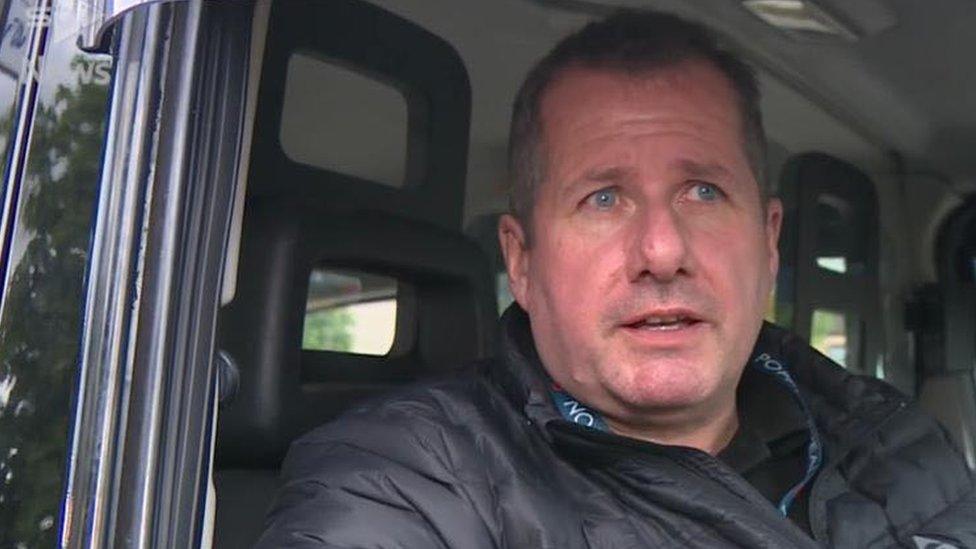How does Glasgow's low emission zone work?
- Published

Scotland's first low emission zone, external (LEZ) has come into effect in Glasgow.
Vehicles which do not meet emission standards are no longer able to enter parts of the city centre - and owners face fines which can rise to several hundreds of pounds per day.
How large is the city's emission zone?
It covers an area between the M8 motorway to the north and west, the River Clyde to the south, and the Saltmarket/High Street to the east.
However, the M8 itself is not part of the low emission zone.
Glasgow City Council has installed signs and road markings at all entry points, and automatic number plate recognition cameras are being installed.

Will my car be able to enter the zone?
In general, petrol vehicles registered from 2006 onwards and diesel engine vehicles registered after September 2015 will meet the required standards.
Transport Scotland has set up a website which allows people to check if their vehicle is compliant, external.
There will be some exemptions from the scheme, including blue badge holders, motorbikes, mopeds and emergency vehicles.
Residents living within the zone will not have to comply until June 2024, and some taxis in Glasgow have also been given extra time.
What are the penalties?

The owner of any non-compliant vehicle detected within the low emission zone will initially face a fine of £60.
The penalty charge will then double with each subsequent breach, rising to a maximum of £480 for cars and light goods vehicles and £960 for buses and HGVs.
Once that figure is reached, the maximum fine will be imposed for each day that the vehicle enters the zone.
The rate is reset to £60 if there are no breaches for 90 days.
The council says the size of the fine will only start to increase after the vehicle's registered keeper can expect to have received the first penalty charge notice.
All penalties will be reduced by 50% if paid within 14 days.
Why is the low emission zone being created?

It was conceived to tackle poor air quality, with many streets in Scotland regularly reaching harmful and illegal levels.
Before the pandemic, concentrations of the pollutant nitrogen dioxide on Hope Street in Glasgow averaged 50% more than the safe legal limit.
Those numbers fell during the lockdown and since the LEZ was brought in for the most polluting buses.
Figures published in 2020 by the Centre for Cities estimated that 600 deaths a year in Scotland could be attributed to air pollution.
Councils now also talk about LEZs being important for tackling climate change, although it is unclear whether it will remove entirely a significant number of vehicles from the roads or just shift them out of the city centre.
Why is Glasgow the first in Scotland?
Glasgow has long held the title of having the most polluted street in the country.
As far back as 2009, the council was looking at ways to introduce such a zone - along with other measures to reduce the number of vehicles in the city centre.
A LEZ has been in place in Glasgow since 2018, but until now has only covered buses.
This means that much of the infrastructure, such as signage, is already in place.
What's happening in other cities?

London's ultra low emissions zone requires drivers to pay a fee
Technically, Scotland's four biggest cities all introduced LEZs last year - but three of them announced a two-year grace period. That means that they will not be enforced in Aberdeen, Dundee and Edinburgh until 2024.
The rules are not as strict as many other UK schemes, such as Oxford's zero emissions zone - where no petrol or diesel vehicles are allowed.
But while non-compliant vehicles will be banned in Scotland, London's ultra low emissions zone only requires drivers to pay a fee.
That sort of scheme has been criticised for having a disproportionate impact on people with lower incomes.
Related topics
- Published19 April 2023

- Published22 September 2022

- Published31 December 2018
